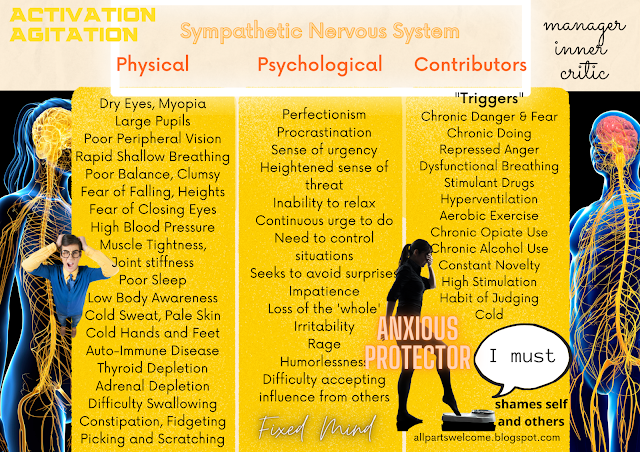🔹 EPs (Emotional Parts):
Definition: EPs are parts of the personality that remain fixated in traumatic experience. They are organized around defense and survival responses like fight, flight, freeze, submit, or cry-for-help.
Somatic Consistency: Yes—EPs often feel "the same in the body over time" because they're frozen in time with specific sensorimotor, emotional, and physiological states linked to the original trauma.
Example: An EP might always feel like a terrified child hiding under the table—even in adulthood—because that body memory hasn’t been integrated.
Relation to Freeze States: Absolutely. EPs often represent frozen states (per Polyvagal Theory or trauma research)—such as tonic immobility or shutdown—especially in early attachment trauma or chronic neglect.
Time Disruption: EPs do not experience time the way the rest of the self does. They are dissociated from the flow of time and carry unprocessed, often preverbal, trauma.
🔹 Primary vs. Secondary vs. Tertiary Dissociation:
As dissociation becomes more complex:
Primary Structural Dissociation: One Apparently Normal Part (ANP) and one EP (e.g., classic PTSD).
Secondary: One ANP and multiple EPs (e.g., Complex PTSD, some presentations of BPD, severe childhood trauma).
Tertiary: Multiple ANPs and multiple EPs (e.g., DID).
In secondary dissociation, EPs can begin to feel more autonomous and fragmented, but they usually still feel "like me but in a certain mood or state." As it moves toward tertiary dissociation, EPs may become more like alters—with distinct names, identities, and autonomy.
🔹 EPs and “Alters”:
EPs are not the same as full alters, but in tertiary dissociation they often develop into alters (if trauma continues or worsens without integration).
Alters in DID may:
Hold specific trauma memories.
Have different ages, voices, postures, or physiological responses.
Sometimes switch independently and be amnesic for each other.
🔹 Summary:






